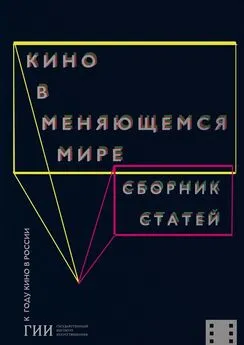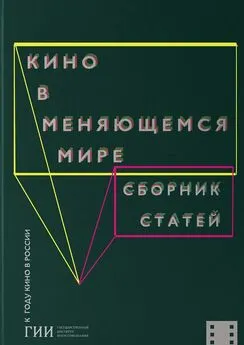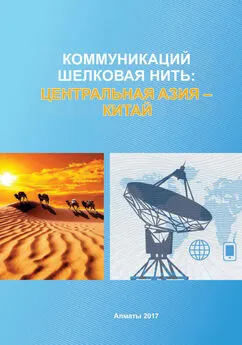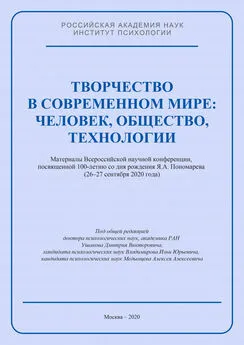Коллектив авторов - Регионы в современном мире: глобализация и Азия. Зарубежное регионоведение
- Название:Регионы в современном мире: глобализация и Азия. Зарубежное регионоведение
- Автор:
- Жанр:
- Издательство:неизвестно
- Год:неизвестен
- ISBN:978-5-00165-178-9
- Рейтинг:
- Избранное:Добавить в избранное
-
Отзывы:
-
Ваша оценка:
Коллектив авторов - Регионы в современном мире: глобализация и Азия. Зарубежное регионоведение краткое содержание
Регионы в современном мире: глобализация и Азия. Зарубежное регионоведение - читать онлайн бесплатно ознакомительный отрывок
Интервал:
Закладка:
Conclusion
Hence, the study concludes that the ongoing regional security problems including terrorism, economic woes, and a need for immediate infrastructure, investment and trade, the OBOR initiative offers a quick economic aid. As China is becoming a more significant geopolitical actor in the Middle East, gradually the regional countries will become more dependent on Beijing for their trade and investment relations. China’s increasing economic soft power will in turn ease their dependency on the West and broaden their foreign policy options that may not always align with the United States and European Union interests. This would also reduce Western control over the region, additionally it increases regional countries’ freedom of action to diversify and engage with more economic partners. It would be beneficial if great powers including the Unites States, European Union, China, India, Russia and others also try to cooperate to jointly promote Middle East stability, security and prosperity.
References
Aneja A.China reaches out to West Asia, The Hindu, 23 March 2017. (in English)
Awasthi S.China-led BRI and its Impact on India with Specific Reference to CPEC // Journal of International Affairs, 2018, Vol 2 No 1. P. 97–110. (in English)
Ehteshami A. and Horesh N.China’s Presence in the Middle East: The Implications of the One Belt, One Road Initiative, 2019, Routledge. (in English)
Frans-Paul van der Putten et al eds.The Geopolitical Relevance of Piraeus and China’s New Silk Road for Southeast Europe and Turkey, Clingendael Report, 2016. P. 27. (in English)
Johny S.China’s long game in West Asia // The Hindu, 29 January 2016. (in English)
Lin C.,The Belt and Road and China’s Long-term Visions in the Middle East, ISPSW Strategy Series: Focus on Defense and International Security, 2017. Vol. 512. P. 1–10. (in English)
Macaes B.Belt and Road: A Chinese World Order. Penguin Viking, 2019. 288 р. (in English)
Olimat M.China and the Middle East from Silk Road to Arab Spring, Routledge, 2015. 240 р. (in English)
Sevilla H.China’s New Silk Route Initiative: Political and Economic Implications for the Middle East and Southeast Asia, 2017, Asian Journal of Middle Eastern and Islamic Studies Volume 11, Issue 1. P. 83–106. (in English)
Shichor Y.Gains and Losses: Historical Lessons of China’s Middle East Policy for Its OBOR Initiative, Asian Journal of Middle Eastern and Islamic Studies, 2018, Vol. 12 Issue 2. P. 127–141. (in English)
Значение Китайского проекта «Один пояс – один путь» для российской экономики
Китайский масштабный проект «Один пояс, один путь», анонсированный в 2013 году, представляет значительный интерес для России. Учитывая санкции, введенные западными странами, и дальнейшее укрепление торгово-экономических и политических отношений со странами Азиатско-Тихоокеанского региона, Россия и Китай укрепляют сотрудничество в рамках данной инициативы. Особенно актуальным и острым в связи с расхождением целей и интересов китайской и российской сторон является вопрос сопряжения проекта «Один пояс, один путь» и Евразийского экономического союза. Как показывает шестилетний опыт реализации инициативы «Один пояс, один путь», реализация проекта идет не гладко и вызывает многочисленные нарекания в адрес Китая из-за навязывания интересов и условий кабалы другим странам, коррупционной составляющей проекта и его непрозрачности. Таким образом, отношение к проекту неоднозначное, и в этих условиях важно выстраивать отношения между Россией и Китаем оптимальным образом для взаимовыгодного сотрудничества. Целью исследования является анализ влияния китайского проекта «Один пояс, один путь» на российскую экономику. Предметом исследования является китайский проект «Один пояс, один путь». Автор приходит к выводу, что в настоящее время российское участие в проекте «Один пояс, один путь» имеет в основном потенциальные преимущества и возможности, а реальные результаты для российской экономики весьма незначительны.
Ключевые слова: Китай, экономика, Евразийский экономический союз, «Один пояс, один путь», Россия.
The Chinese large – scale project «One belt – one road» announced in 2013, is of significant interest to Russia. Taking into account the sanctions imposed by Western countries and the further strengthening of trade, economic and political relations with the countries of the Asia-Pacific region, Russia and China are strengthening cooperation within the framework of this initiative. Particularly relevant and acute due to the divergence of goals and interests of the Chinese and Russian sides is a question of interface of the project «One belt – one road» and the Eurasian Economic Union. As the six years’ experience of the «One belt – one road» initiative shows, the implementation of the «One belt – one road» project does not go smoothly and causes numerous criticism of China in imposing interests and conditions of bondage to other countries, the corruption component of the project and its opacity. Thus, the attitude to the project is ambiguous, and in these conditions, it is important to build relations between Russia and China in an optimal way for mutually beneficial cooperation. The aim of the study is to analyze the impact of the Chinese project «One belt – one road» on the Russian economy. The subject of the study is the Chinese project «One belt – one road». The author comes to the conclusion that at present the Russian participation in the project “One belt has mainly potential advantages and possibilities and real results for the Russian economy are very insignificant.
Keywords: China, economy, Eurasian Economic Union, «One belt – one road», Russia.
Introduction
The importance of studying the impact of the Chinese project «One belt – one road» on the Russian economy is beyond doubt. The Chinese project is an open initiative and any country can join it. The project has a huge multiplier effect and is very attractive not only for China, but also for other countries. One of the active participants of the concept of «One belt – one road» is Russia. Nowadays Russia and China are strengthening economic and political cooperation within the framework of this initiative. This article will analyze the impact of the Chinese mega project «One belt – one road» on the Russian economy, highlight its advantages and disadvantages.
Methodology
In the course of the study the author identifying the advantages and disadvantages of the influence of the Chinese project «One belt – one road» on the Russian economy, used a comparative method, analysis and synthesis. The research is based on the materials of Russian and foreign experts and scientists.
Main results
The Chinese project «One belt – one road», combining the «Silk Road Economic belt» and the «Maritime silk road of the XXI century», was first proposed by the President of China – Xi Jinping in 2013. This project is a key element of the general Chinese policy and is aimed at the strengthening China’s position in the international arena, solving China’s domestic economic problems and strengthening regional integration.
This project will lead to significant transformations in the Eurasian space, in particular in the transport and logistics sectors. The project involves the development of cooperation between the countries in five key areas: infrastructure cooperation, political coordination, the growth of mutual trade, strengthening of spiritual unity and free movement of capital 30 30 China in the world and regional politics. The history and modernity. Issue XXII / ed. Safronov E. I. – Moscow: Institute of Far Eastern studies, 2017. – 400 p. URL: https:// publications.hse.ru/mirror/pubs/share/direct/211288436 (date of access: 18.12.2019).
.
According to the project, it is expected that there will be three main routes of the Economic belt: North – from China through Central Asia and Russia to the Europe, Central – from China through the Central and West Asia to the Persian Gulf and the Mediterranean Sea, South – from China to the Southeast and South Asia to the Indian Ocean. Within these areas it is planned to create international corridors: China-Mongolia-Russia, China-Central Asia-West Asia, China-Indochina, China-Pakistan, Bangladesh-India-Myanmar-China.
The Chinese project is an open initiative and any country can join it. In 2019 China has already signed 173 agreements according to the participation in the project with 125 countries and 29 international organizations. It is interesting that over 60 countries joined the project only in 2018. The project has been so deeply integrated into China’s foreign policy that it was mentioned in the Charter of the Communist party of China in 2017 31 31 Manukov S. One belt and one road, the clarification path and the extension zone // EurAsia Daily, 03.05.2019. URL: https://eadaily.com/ru/news/2019/05/03/odin-poyas-odin- put-utochnenie-puti-i-rasshirenie-poyasa (date of access: 14.12.2019).
.
The scale of the project «One belt – one road» is enormous from the different points of view. For persuasiveness we can give some statistics. Morgan Stanley estimates that by 2027 the project will cost approximately $1.3 trillion. The Chinese banks and financial institutions, mostly state-owned, have invested more than $90 billion in this project. The reason is this project is widely supported by the Chinese government. China’s partners have invested more than $ 40 billion in the Chinese economy. The volume of trade between China and «One belt – one road» participants, which exceeded $6 trillion, is impressive. The trade with project partners increases by an average of 4% per year. Over the six years of the project’s existence it accounted for 27.4% of the Chinese trade in whole 32 32 Ibid.
. So, the project has a huge multiplier effect and is very attractive, not only for China, but also for other countries.
Интервал:
Закладка:










